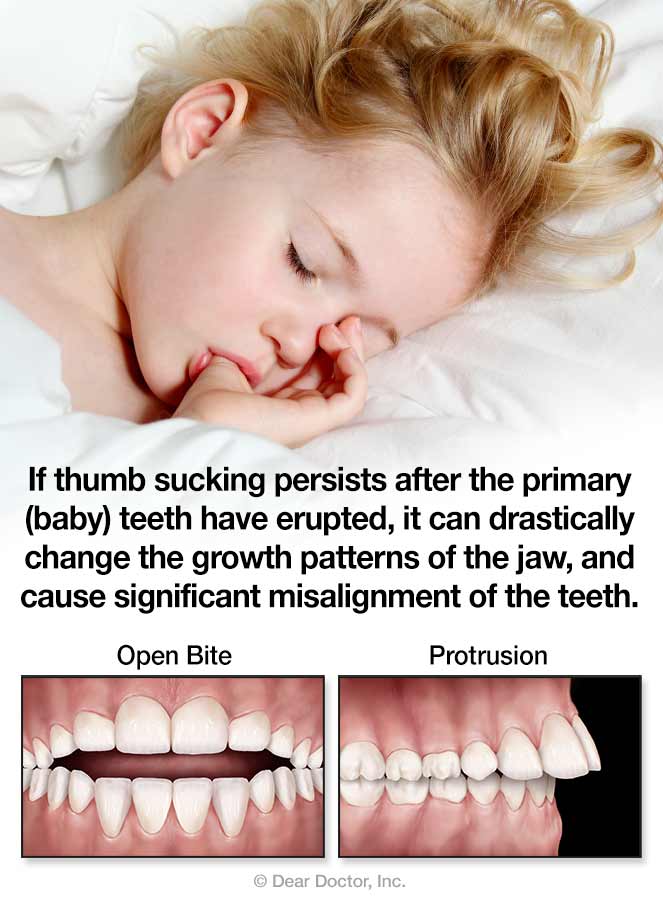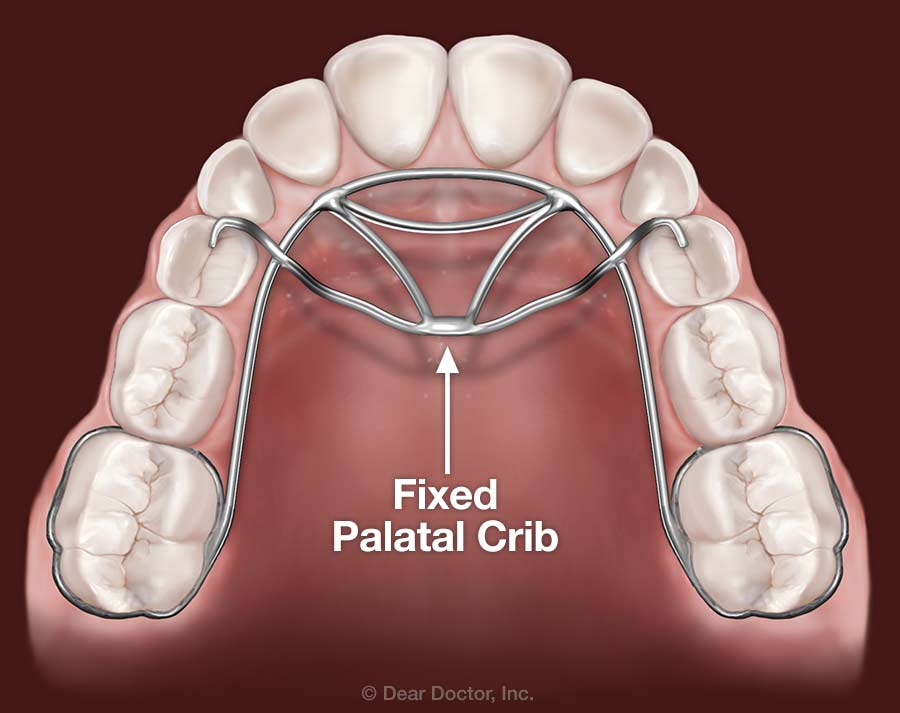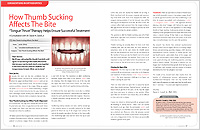Thumb and Finger Appliances

Early Orthodontic Treatment in North Potomac, MD
At North Potomac Orthodontics we're proud to offer comprehensive orthodontic treatment to patients throughout North Potomac, Gaithersburg, Kentlands/Lakelands, Rockville and the surrounding communities. We're proud to be a comprehensive orthodontic practice offering a wide range of orthodontic options, and we treat patients of all ages. While most of our patients are teenagers or adults, sometimes the best way to achieve a new smile is to start with early orthodontic treatment - and that's especially true in the case of prolonged thumb sucking.
Is Thumb Sucking a Problem?
Few images invoke the comfort of infancy quite like a sleepy baby sucking on a thumb or finger. The sucking reflex is a natural instinct, and thumb sucking is an incredibly common self-soothing technique for infants everywhere. In fact, it can even start while the baby is still in the womb!
But while thumb sucking is no problem during infancy, if the behavior continues for too long, it can start to pose a threat to healthy dental development. If thumb or finger sucking persists past the age of 3 or 4, the behavior can actually influence the growth of the teeth and jaws, causing a malocclusion (bad bite) known as openbite. Over time, the pressure of the thumb on the front teeth causes them to tilt forward until the upper and lower front teeth are slanted so far forwards that they don't meet when the mouth is closed. This leaves a visible gap in the smile, and this orthodontic condition can impair speech, chewing, and proper bite function.
It may seem far-fetched that something as simple as thumb sucking could change the alignment of bone, but the reason has to do with childhood dental development. The bone's in a child's jaw and mouth are much softer and more flexible than those of an adult, and they grow fast. Albeit gentle, the constant pressure from the thumb acts to gradually tilt the teeth forward, and it can even cause other malocclusions like tooth misalignment, crossbite, and other orthodontic issues.
Treating Prolonged Thumb Sucking
Most children stop sucking their thumb on their own, but if the habit does persist, it can be surprisingly tough to break. There are a number of at-home techniques ranging from special gloves and bad-tasting nail polish to more behaviorally-based approaches, and we always encourage parents to first try working with their children to help them stop. But if the habit proves to be too much to overcome, we can fix the problem effortlessly and painlessly through orthodontic treatment.
Using an orthodontic appliance called a fixed palatal crib, we can help your child stop their thumb sucking habit easily and conveniently. The crib is a small metal appliance that's attached to the upper teeth and worn inside the mouth, and it contains semicircular wires that prevent the thumb or any other finger from touching the gums behind the teeth. It's that simple: once that contact is removed, thumb sucking simply isn't as comforting. Most children stop sucking their thumb almost immediately, and there's rarely any tears or fuss involved.

Tongue Thrusting
Another childhood habit that can cause problems with dental development is tongue thrusting. Tongue thrusting occurs when a child pushes their tongue into the front teeth when swallowing. Just like thumb sucking, this is normal for infants and usually disappears by age 4. But if the behavior continues, it can alter dental development in much the same way as tongue thrusting, eventually leading to malocclusions. Thankfully, tongue thrusting is also easily treated through another orthodontic appliance that is very similar to a palatal crib.Habit Appliance Orthodontic Treatment
While palatal cribs cause virtually no pain, it's normal for children to feel a bit of soreness in the upper back teeth the first day we place the crib. This may also make it a little difficult to sleep. Remember, while the palatal crib is a simple and gentle treatment, your child is still parting with a coping mechanism they relied on - so be sure to give them plenty of extra love, attention, and TLC during treatment.
Schedule a Consultation with Your Gaithersburg Kids Orthodontist
Related Articles

How Thumb Sucking Affects The Bite Thumb sucking can actually block the front teeth from erupting fully and can also push the teeth forward — sometimes more on the side where the thumb rested. How far out of position the teeth end up will depend on the number of hours per day the thumb was in the child's mouth and how much pressure was applied. When the pressure exerted by the thumb in the mouth is particularly strong and occurs over a long period of time, the forces can potentially influence growth of the jaws... Read Article
